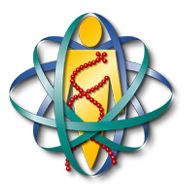Monte Carlo Simulation of Base and Nucleotide Excision Repair of Clustered DNA Damage Sites.
I. Model Properties and Predicted Trends
V. A. Semenenko§, R. D. Stewart§, and E.J. Ackerman†
§Purdue University, School of Health Sciences, West Lafayette, IN 47907-2051
† Pacific Northwest National Laboratory, Richland, WA 99352
Radiat. Res. 164, 180-193 (2005).
DNA is constantly damaged through endogenous processes and by exogenous agents, such as ionizing radiation. Base excision repair (BER) and nucleotide excision repair (NER) help maintain stability of the genome by removing many different types of DNA damage. We present a Monte Carlo excision repair (MCER) model that simulates key steps in the short-patch and long-patch BER pathways and the NER pathway. The repair of both single and clustered damages, except double-strand breaks (DSBs), is simulated in the MCER model. Output from the model includes estimates of the probability a cluster is repaired correctly, the fraction of the clusters converted into DSBs through the action of excision repair enzymes, the fraction of the clusters repaired with mutations, and the expected number of repair cycles needed to completely remove a clustered damage site. The quantitative implications of alternative hypotheses regarding the postulated repair mechanisms are investigated through a series of parameter sensitivity studies. These sensitivity studies are also used to help define the putative repair characteristics of clustered damage sites other than DSBs.
Acknowledgement
Research supported by the Low Dose Radiation Research Program, Biological and Environmental Research (BER), U.S. Department of Energy, Grant Nos. DE-FG02-03ER63541, DE-FG02-03ER63665, KP1102020 42668, and KP1102020 42699.

U.S. Department of Energy, Low Dose Radiation Research Program. Science in Support of Radiation Risk Policy.